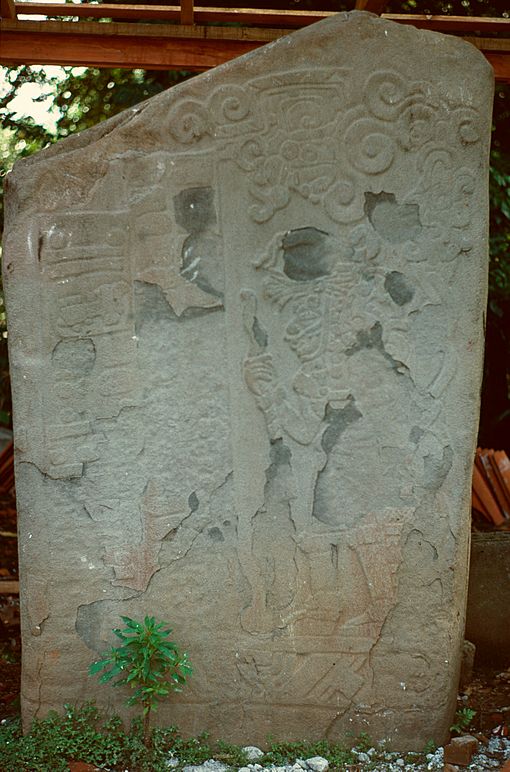El Baúl facts for kids

El Baúl is an ancient Pre-Columbian city in Guatemala. It is an archaeological site located in the Escuintla Department. El Baúl was part of a larger area called the Cotzumalhuapa Archaeological Zone. This zone also included the sites of Bilbao and El Castillo. People lived here during the prehistoric Formative stage of the Americas.
Contents
Exploring the Ancient City of El Baúl
The main part of El Baúl, called the acropolis, is about 4 kilometers north of Santa Lucía Cotzumalguapa. It sits about 550 meters above sea level. This ancient city is also about 50 kilometers from the Pacific Ocean.
What Was Found at El Baúl?
The southern part of the acropolis was unfortunately destroyed in 1997. This happened because of new buildings in the area. Today, much of the main site is covered by sugar cane fields.
Archaeologists found many interesting things at El Baúl. There was a large ballcourt about 500 meters north of the acropolis. Several ancient homes were located between the ballcourt and the main city center.
How Was the City Connected?
El Baúl was connected to other parts of the Cotzumalhuapa zone by special ancient roads. These roads are called causeways. The largest causeway was about 2.5 kilometers long. It was also very wide, between 11 and 14 meters across. This causeway connected the main areas of El Baúl and Bilbao.
Before reaching El Baúl, the causeway crossed a large bridge. This bridge went over the Santiago River gorge. The stone foundations of this old bridge can still be seen today. They stretch for about 30 meters along the river. Many large stone sculptures have been found along these ancient causeways.
Life in a Volcanic Land
El Baúl is in a volcanic area. It is located just south of an active volcano called Fuego volcano. This means the people living there experienced volcanic activity.
Archaeologists found evidence of workshops at El Baúl. These workshops were likely used to make tools from obsidian. Obsidian is a sharp, black volcanic glass. They also found a probable sweatbath, which was a common feature in ancient Mesoamerican cities.
Scientists studied the soil at El Baúl. They found layers of volcanic ash deep underground. This ash came from the nearby Fuego volcano. Even below these ash layers, they found pieces of obsidian. This suggests that people were making tools and living in the area for a very long time.
See also
 In Spanish: El Baúl (sitio arqueológico) para niños
In Spanish: El Baúl (sitio arqueológico) para niños

